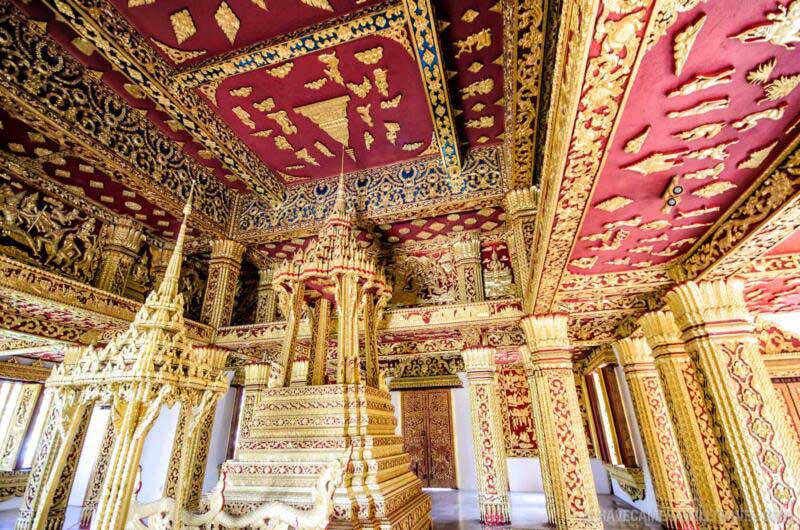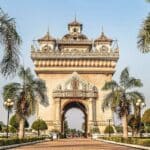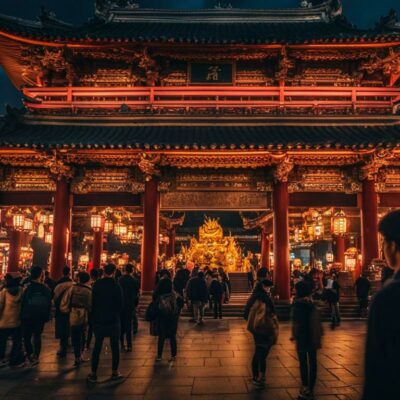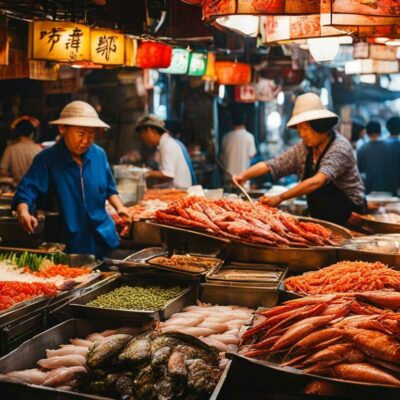Unveiling the Rich History of Haw Pha Bang
The Legend Behind Haw Pha Bang
According to local folklore, Haw Pha Bang owes its name to the mythical Pha Bang Buddha image, which is believed to possess immense spiritual power and protection. Legend has it that the Pha Bang Buddha was brought to Luang Prabang in the 14th century and became the symbol of the city’s divine protection.The Origins of Haw Pha Bang
Haw Pha Bang was built during the reign of King Sisavang Vong in the early 20th century. The temple was designed as a royal residence for the Phra Bang Buddha, serving as a testament to the strong devotion of the Lao people towards Buddhism.Architectural Marvels of Haw Pha Bang
The architecture of Haw Pha Bang is a blend of traditional Lao and French colonial styles. The temple boasts intricate carvings, gilded details, and ornate decorations that showcase the skilled craftsmanship of the local artisans. Its grandeur and attention to detail make it a true architectural marvel.Religious Significance of Haw Pha Bang
Haw Pha Bang is a place of worship and pilgrimage for Buddhists in Laos and around the world. The temple houses the revered Phra Bang Buddha, which is considered the spiritual guardian of Luang Prabang. Devotees visit the temple to pay their respects, seek blessings, and find solace in its serene atmosphere.Historical Events and Influences
Throughout its history, Haw Pha Bang has witnessed significant events that shaped the course of Laos. From royal ceremonies and religious processions to political gatherings and cultural celebrations, the temple has been a silent witness to the nation’s triumphs and tribulations.The Royal Connection
Haw Pha Bang’s association with the Lao monarchy further adds to its historical importance. As a royal residence for the Phra Bang Buddha, it symbolizes the deep-rooted connection between the monarchy and Buddhism in Laos. The temple stands as a testament to the monarchy’s influence on the country’s cultural and spiritual landscape.Preservation Efforts
Recognizing the cultural significance of Haw Pha Bang, extensive efforts have been made to preserve and restore the temple. Various restoration projects, supported by local and international organizations, aim to maintain the temple’s architectural integrity and safeguard its historical value for future generations.Visiting Haw Pha Bang
Today, visitors have the opportunity to explore the grandeur of Haw Pha Bang and immerse themselves in its rich history. Tourists can admire the intricate architectural details, stroll through the temple grounds, and witness the devotion of the local people firsthand. It is a destination that offers both spiritual enlightenment and cultural immersion.Haw Pha Bang Festival
The Haw Pha Bang Festival is a vibrant celebration held annually in Luang Prabang. The festival pays homage to the Phra Bang Buddha and showcases traditional Lao customs, music, dance, and religious ceremonies. It attracts visitors from all over the world, creating a lively atmosphere of cultural exchange and appreciation.
Haw Pha Bang and World Heritage Status
In 1995, Luang Prabang, including Haw Pha Bang, was designated as a UNESCO World Heritage site. The recognition highlights the outstanding universal value of the city’s unique architecture, cultural traditions, and spiritual heritage. It also brings attention to the importance of preserving this historical gem for future generations.The Mystique Surrounding Haw Pha Bang
Haw Pha Bang exudes an aura of mystique, captivating the imagination of visitors. Its rich history, intricate design, and spiritual significance create an enchanting ambiance that transports individuals to a bygone era. Exploring the temple is like embarking on a journey through time, unraveling the secrets and stories hidden within its walls.Haw Pha Bang’s Impact on Tourism
Haw Pha Bang has played a pivotal role in promoting tourism in Luang Prabang and Laos as a whole. Its allure attracts travelers who seek cultural immersion, architectural marvels, and spiritual experiences. The temple acts as a gateway to the country’s vibrant heritage and serves as a catalyst for economic growth through sustainable tourism.Art and Culture at Haw Pha Bang
Art and culture flourish within the premises of Haw Pha Bang. The temple serves as a venue for traditional performances, art exhibitions, and cultural events, providing a platform for local artists to showcase their talents. It is a vibrant hub where the past meets the present, enriching the cultural fabric of Luang Prabang.Discover the Top Caribbean Luxury Resorts
Legends and Myths Associated with Haw Pha Bang
Over the centuries, Haw Pha Bang has become intertwined with captivating legends and myths. Tales of divine intervention, miraculous events, and spiritual encounters further add to the allure of the temple. These stories have been passed down through generations, contributing to the cultural tapestry of the region.The Future of Haw Pha Bang
As Haw Pha Bang continues to stand as a symbol of Laos’ rich history, its future remains promising. Efforts to preserve and promote the temple will ensure that it remains a cherished cultural heritage site for generations to come. The temple’s mystique and grandeur will continue to captivate visitors, inviting them to explore the timeless beauty embedded within its walls.Conclusion
Haw Pha Bang stands as a testament to Laos’ rich cultural heritage and serves as a gateway to its captivating past. This iconic temple, with its awe-inspiring architecture and spiritual significance, offers visitors a profound glimpse into the country’s history. As we unravel the layers of stories hidden within Haw Pha Bang, we come to appreciate the profound impact it has had on the people, culture, and spirituality of Laos.What Is the Origin and History of Xiaolongbao?
Xiaolongbao’s fascinating history and origin can be traced back to Shanghai in the 19th century. These delectable Chinese dumplings are known for their unique soup-filled interior, intricate folds, and delicate flavors. Xiaolongbao’s roots can be attributed to the influence of traditional jiaozi (dumplings) and tangbao (soup-filled buns). Today, this culinary treasure has gained immense popularity worldwide, captivating food enthusiasts with its rich heritage and tantalizing taste.












